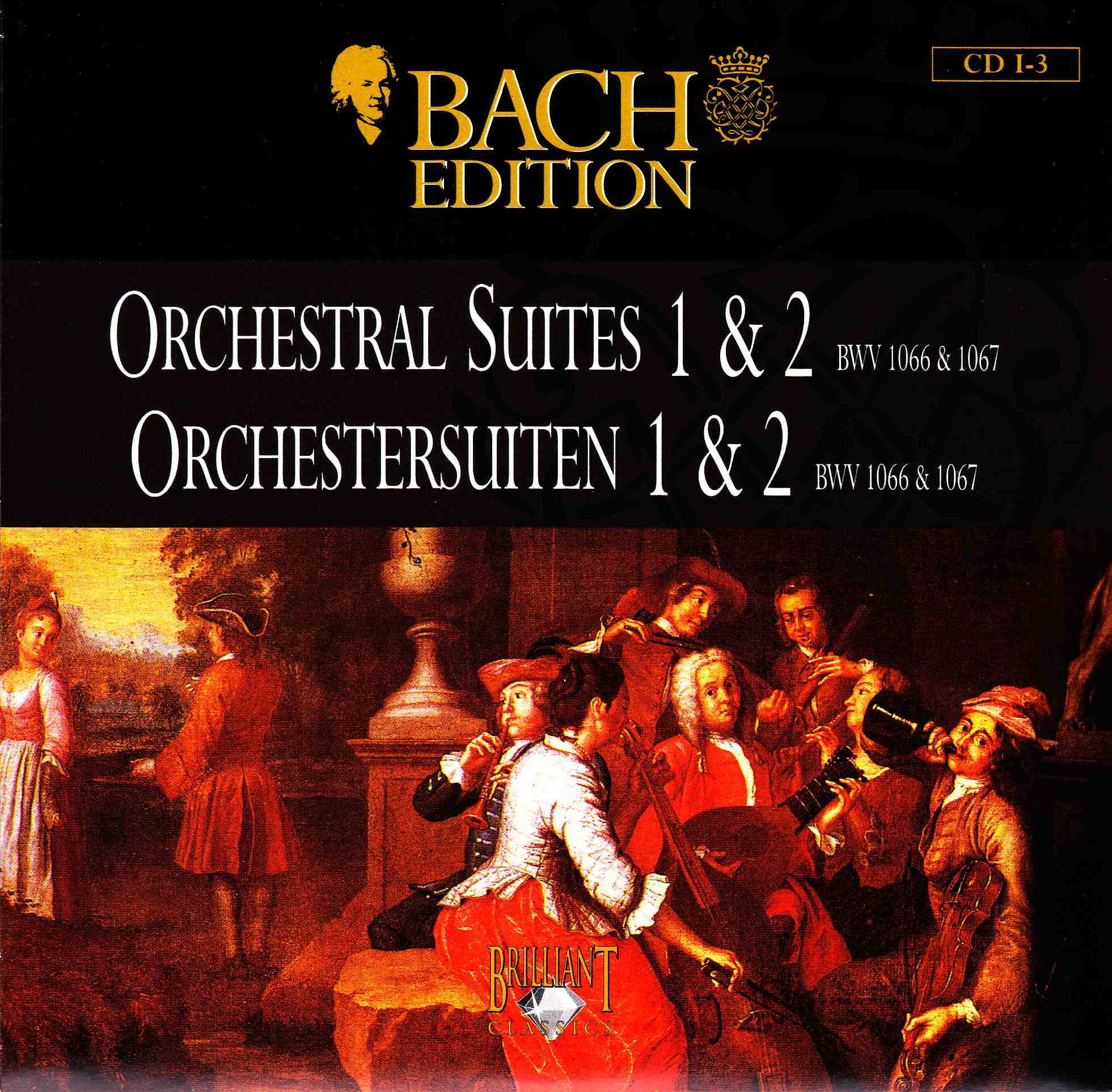 When this CD began to play, my mind couldn’t find the melody in the music.
When this CD began to play, my mind couldn’t find the melody in the music.
“Are we listening to an orchestra tuning up?” I asked my wife.
“I can hear a melody there,” she said. Of course, she’s a musician who plays the French horn. So her ears are probably sharper than mine.
Or maybe it’s that I’m used to Mozart’s simpler, prettier melodies. So when Bach’s Orchestral Suite No. 1 started, it seemed like a lot was going on, more than I could discern (and appreciate) at first.
So I took control of the situation and got my head around what I could understand. According to the Wikipedia entry for Orchestral Suites (Bach),
The four Orchestral Suites or Ouvertures BWV 1066–1069 are a set of compositions by Johann Sebastian Bach, probably composed between 1725 and 1739 in Leipzig. The word overture refers to an opening movement in which a section of slow dotted-note rhythm is followed by a fugue; at the time, this name was also used to refer to a whole suite of dance-pieces in the French baroque style.
That I can understand. Bach was between 40 and 54 years of age, living in Leipzig, Germany. And these pieces of music contain fugues and are of the French baroque style.
Check.
That explains their “busy” sound.
These pieces of music were performed by La Stravaganza Koln on period instruments under the direction of Andrew Manze. La Stravaganza Koln is “one of Germany’s leading baroque orchestras on period instruments” (according to their web site).
Soloists of note include Masahiro Arita, flauto traverso, and Christoph Lehmann, organ. Incidentally, the phrase “flauto traverso” refers to a Transverse Flute, which is “held horizontally when played. The player blows ‘across’ the embouchure hole, in a direction perpendicular to the flute’s body length.” Arita really shines in “VII – Badinerie” from Orchestral Suite No. 2 in B minor for flute, strings and continuo.
The musicianship on this CD is, as it was on the previous two, superb. The recording is crisp and clear. The performances are top-notch.
And the period instruments add a very nice touch. If you listen carefully to music (as I do) you’ll notice right away the difference in sound.
Despite the pluses, this isn’t music I could listen to as often as I do Brandenburg Concertos 1-3. It’s great. But it’s not sprightly or engaging enough to bear up to repeated listenings. If I had to pick a favorite — Orchestral Suite No. 1 or Orchestral Suite No. 2 — I’d have to say it was Orchestral Suite No. 1. I prefer my Classical music on the sprightly side. That fit the bill.
But it’s no Brandenburg Concerto.

 You can call me Johann. But don't expect me to answer to that.
You can call me Johann. But don't expect me to answer to that.
No Comments so far ↓
There are no comments yet...Kick things off by filling out the form below.